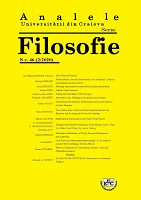PARADIGM OF POSTMODERN PARANOIA IN PREETI SHENOY’S LIFE IS WHAT YOU MAKE IT AND WAKE UP, LIFE IS CALLING
PARADIGM OF POSTMODERN PARANOIA IN PREETI SHENOY’S LIFE IS WHAT YOU MAKE IT AND WAKE UP, LIFE IS CALLING
Author(s): D Pandeeswari, A Hariharasudan, Sebastian KotSubject(s): Social Philosophy, Other Language Literature, Clinical psychology, Health and medicine and law
Published by: Editura Universitaria Craiova
Keywords: postmodern paranoia; exasperation; bipolar disorder; mental asylum; suspicion;
Summary/Abstract: The aim of the study alleges on the postmodern perspectives of paranoia in Preeti Shenoy’s Life is What You Make It and Wake Up, Life is Calling. The term Paranoia is irrational and persistent feeling. The features of paranoia are depression, exasperation and holocaust of mind, Schizophrenia, tantrums and hallucination. The postmodern tendency of paranoia is exemplified by researchers in various works. The postmodern writer, Preeti Shenoy is a multifarious writer. Her famous novels are Life is What You Make It (2011) and Wake Up, Life is Calling (2019) that is a sequel to Life is What You Make It. These novels portray the issue of postmodern paranoia through her writings. Ankita Sharma is the protagonist in both novels. She is affected by bipolar disorder, and she leads her half of the life in a mental asylum. These two novels focus on Ankita’s holocaust of mind. The methodology of the study also adopts the theories of paranoia proposed by Sigmund Freud, Sheldon Cooper, Jacques Lacan, Thomas Ruggles Pynchon, Harry Stack Sullivan, Ivan Pavlov, Carl Jung, Jean Francois Lyotard and James Cameron. The present study emphasizes Shenoy’s texts that depict the paranoid thoughts of Ankita Sharma. The issue of paranoia in the texts is substantiated and explored by using the various theories related to postmodern paranoia. The results of the study are compared and discussed with other studies concerning paranoia. Finally, the findings of the study explore that postmodern paranoia exist in the works. Bipolar disorder is one of the mental problems in paranoia. The protagonist Ankita Sharma is affected by bipolar disorder. By this disorder, her life is shattered and admitted in a mental asylum.
Journal: ANALELE UNIVERSITĂȚII DIN CRAIOVA. SERIA FILOSOFIE
- Issue Year: 2/2020
- Issue No: 46
- Page Range: 135-162
- Page Count: 28
- Language: English

